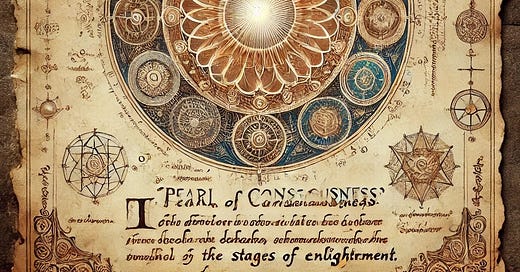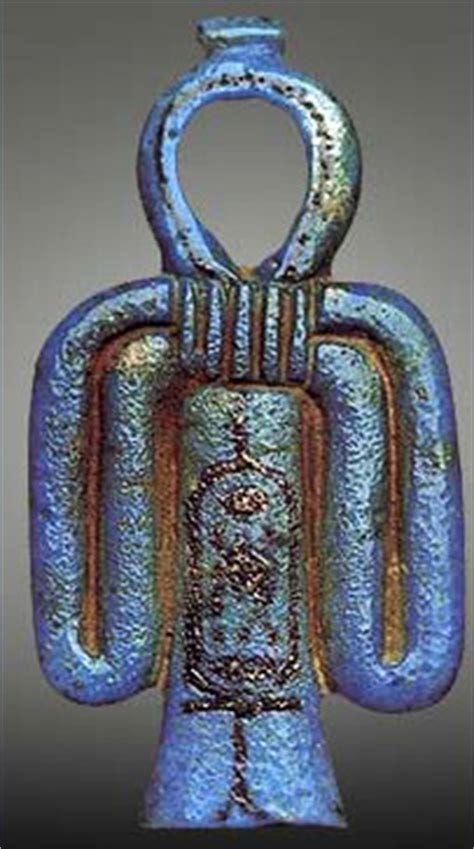I have been practicing a Daoist meditation called the Microcosmic Orbit. As part of this practice, I visualize a pearl forming and growing in my sacrum—the Pearl of Consciousness.
“Do you feel the pearl?” my meditation teacher once asked.
“I think so… yes, yes, I do.”
As I continued the practice, I noticed a shift. Standing before a mirror, my body appeared more solid, more grounded. This non-local, non-material “pearl” visibly affected how I perceived myself.
Yet, I don’t imagine an actual pearl growing inside my body. Instead, I see this as a metaphor: refined consciousness condensing out of the raw material of experience—an alchemical process, a mystery of transfiguration.
Transfiguration
When I searched for the definition of transfiguration, the Transfiguration of Jesus dominated the results. This biblical moment, where Jesus, praying on a mountaintop, emanates rays of light and is declared the “Son of God,” is one form of transfiguration. But the dictionary definition is broader:
a) change in form or appearance: metamorphosis
b) an exalting, glorifying, or spiritual change
Metamorphosis brings to mind Ovid’s Metamorphoses, tales of humans transforming into plants and animals. Spiritual metamorphosis also calls to mind the Jungian concept of individuation, the process often unfolding in midlife in which a person sheds the conditioned beliefs of society, family, and religion—consensus reality itself—and becomes a distinct individual with their own consciousness. Individuation is a mysterious unfolding, much like the Daoist cultivation of the pearl.
This process of individuation is also often likened to a flower blooming. Just as a human individuates, a flower blossoms into its fullest expression.
This flower stalk is the plant mullein. Mullein is a plant that soothes the lungs as a tea and ear aches as an oil. Last summer, while visiting Rheims, I saw a mullein stalk growing on the site of Joan of Arc’s martyrdom, an Ovidian transfiguration.
There are many phytochemical reasons for Mullein’s demulcent qualities. However, Dr. Edward Bach pioneered the creation of the Mullein flower essence (and flower essences in general). A flower essence captures the consciousness or vibration of a plant in water. When we take a flower essence, the medicine works on our emotional and spiritual bodies rather than our physical bodies—a scientific animist practice perhaps.
Spiritual and Material Techniques
In Jacques Ellul’s The Technological Society, he distinguishes material and spiritual (or magical) techniques:
When a civilization dies, it transmits to its heirs its material but not its spiritual apparatus. Tools, houses, and methods of manufacture live on and, more or less reincarnated, are to be met with again… But magical techniques, rites, formulas, and sacrificial practices disappear irremediably…Since every technique is subordinate to its immediate result, it is only a question of choosing the one that produces the most satisfactory result; and, in the material domain, that result can readily be seen… But with magical techniques, the same certainty or force of evidence does not exist. Who can judge their relative efficiency? Magical efficiency is not always to be measured by a clear material result such as making rain fall, but may have to do with some purely spiritual phenomena or even with material phenomena over a long period of time.
This is at the core of the tension between material and spiritual practices: Spiritual experience is subjective and often unquantifiable, making it more difficult to measure, yet this does not make it less accurate. As scientific animism progresses, I imagine we will see a proliferation of technologies designed for consciousness cultivation—tools that blur the lines between material and spiritual techniques.
I consider Brion Gysin’s Dream Machine, a stroboscopic device designed to induce altered states of consciousness through flickering light.
I think of John Vervaeke’s concept of psychotechnologies, tools that expand human consciousness like writing, the computer or meditation, and practices for making meaning of our experiences; what he calls an ecology of practices.
Full Moon Fever
This essay is going out on the full moon. The full moon is like a pearl—luminous, round, reflective. Across cultures, the moon is tied to numerous technologies and practices. It governs the lunar calendar, an apparatus of social organization. It regulates the tides and aligns with the ovulation cycles of many women. Poet and activist Judy Grahn theorizes that the association between menstruation and the moon was the foundation for early human culture—sparking the creation of tools, rituals, and abstract reasoning.
A prompt: What techniques and practices support a scientific animist orientation?
A meditation: Imagine the pearl growing. Imagine the moon shining. A mystery unfolds, within and without.








